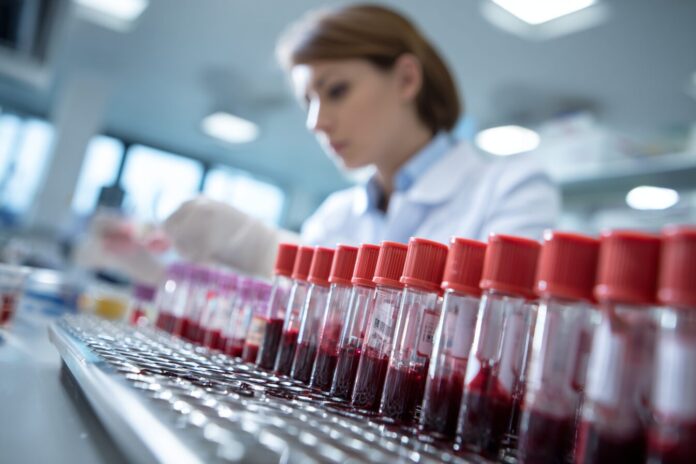Detecting cancer at its earliest stage remains a holy grail in oncology. Traditional imaging and tissue biopsies often identify tumors only after they have reached a clinically detectable size. However, recent advances in liquid biopsy techniques have brought a paradigm shift. A groundbreaking study published by researchers at the National Cancer Institute has demonstrated that specific circulating tumor DNA (ctDNA) mutations can be identified in patient blood samples up to three years before conventional diagnostic methods confirm cancer. This early-warning capability has the potential to transform cancer care, enabling preventive measures, closer monitoring, and timely interventions that could dramatically improve patient outcomes.
The Promise of Liquid Biopsies
Liquid biopsies analyze tumor-derived biomarkers in peripheral blood—principally ctDNA, exosomes, and circulating tumor cells (CTCs). These biomarkers offer a real-time snapshot of tumor biology without the need for invasive tissue sampling. Key advantages include:
- Minimal invasiveness: A routine blood draw suffices, reducing patient discomfort and risk.
- Repeatability: Tests can be administered at regular intervals for longitudinal monitoring.
- Comprehensive tumor profiling: ctDNA can reveal mutation heterogeneity across primary and metastatic sites.
How Liquid Biopsies Work
- Sample Collection: A standard phlebotomy draws 10–20 mL of blood into specialized tubes that preserve cfDNA integrity.
- cfDNA Extraction: Plasma is separated by centrifugation, and cell-free DNA (cfDNA) is isolated using magnetic bead-based methods.
- Library Preparation and Sequencing: Next-generation sequencing (NGS) libraries are prepared, often with targeted panels covering hundreds of cancer-associated genes.
- Bioinformatic Analysis: Sophisticated pipelines filter out background noise, identify low-frequency mutations, analyze methylation patterns, and interpret fragmentomics.
Breakthrough Study: Early Detection Timeline
In a cohort of 5,000 high-risk individuals (smokers, familial cancer history, or chronic inflammation), annual blood samples collected over five years were retrospectively analyzed. Researchers detected ctDNA markers linked to three major cancer types long before clinical diagnosis:
- Lung Cancer (EGFR/KRAS mutations): Mutations appeared in patient plasma up to 36 months before CT scans revealed nodules.
- Colorectal Cancer (APC/TP53 alterations): Signatures emerged nearly three years prior to symptom onset and colonoscopic confirmation.
- Pancreatic Adenocarcinoma (KRAS G12D): KRAS variants were present in cfDNA roughly 34 months before imaging and CA19-9 marker elevation.
These lead times far exceed the capabilities of existing screening methods such as low-dose CT or fecal immunochemical tests, offering a multi-year window for potential intervention.
Clinical Implications
Early ctDNA detection could reshape oncology pathways in several ways:
- Enhanced monitoring: At-risk patients could undergo tailored surveillance schedules, combining liquid biopsies with imaging only when molecular signals appear.
- Preemptive therapies: Oncologists might deploy targeted agents (e.g., EGFR inhibitors) at the first molecular hint, potentially delaying or preventing tumor emergence.
- Chemoprevention trials: Pharmaceutical studies could enroll participants based on ctDNA positivity, evaluating drugs that halt carcinogenesis at a premalignant phase.
- Reduction in treatment toxicity: Starting therapy earlier could allow for lower dosage regimens, minimizing side effects and preserving quality of life.
Challenges and Ethical Considerations
Despite its promise, broad adoption of liquid biopsy screening raises significant hurdles:
- False positives and overdiagnosis: Non-malignant clonal hematopoiesis can produce ctDNA-like mutations, risking unnecessary procedures.
- Economic burden: Comprehensive NGS panels and bioinformatics analyses remain expensive and may not be reimbursed by insurers.
- Data privacy: Genetic information requires secure handling to protect patient confidentiality.
- Psychological impact: Discovering a molecular tumor signal without visible disease can cause anxiety and affect mental health.
Establishing guidelines that specify frequency of testing, thresholds for action, and counseling protocols will be critical to balance benefit and harm.
Future Directions
The field continues to advance rapidly:
- Multi-Cancer Early Detection (MCED) Tests: Companies such as GRAIL (Galleri) and Exact Sciences (CCGA) are offering blood tests that screen dozens of cancer types simultaneously. Early pilot trials show sensitivity rates of 50–70% for stage I–II cancers with high specificity (>99%).
- Integration with Artificial Intelligence: Machine learning algorithms enhance signal detection by integrating multi-omic data—cfDNA mutations, methylation, and fragment patterns—to improve accuracy.
- Large-Scale Prospective Trials: Initiatives like the NHS-funded PATHFINDER trial (UK) and the Circulating Cell-free Genome Atlas (CCGA) study (US) aim to validate liquid biopsy utility in general populations.
- Point-of-Care Technologies: Emerging microfluidic platforms may enable near-patient ctDNA analysis, reducing reliance on centralized laboratories.
Conclusion
The detection of cancer biomarkers in blood up to three years before traditional diagnosis marks a turning point in oncology. As liquid biopsy assays become more affordable and accurate, they could serve as frontline tools for early cancer detection, personalizing surveillance and intervention strategies. Crucially, multidisciplinary collaboration among researchers, clinicians, ethicists, and policymakers will ensure these innovations improve patient outcomes while minimizing potential harms.
Besides that, breakthroughs in technology have enabled scientists to detect circulating tumor DNA (ctDNA) and protein biomarkers with impressive sensitivity. With rigorous research conducted by experts, this method is paving the way for earlier cancer detection than ever before. For additional insights, you can refer to articles on SciTechDaily and Earth.com which detail these advancements.



